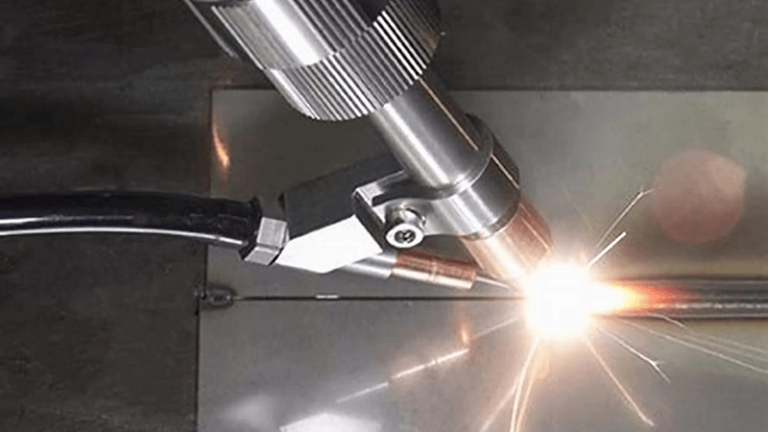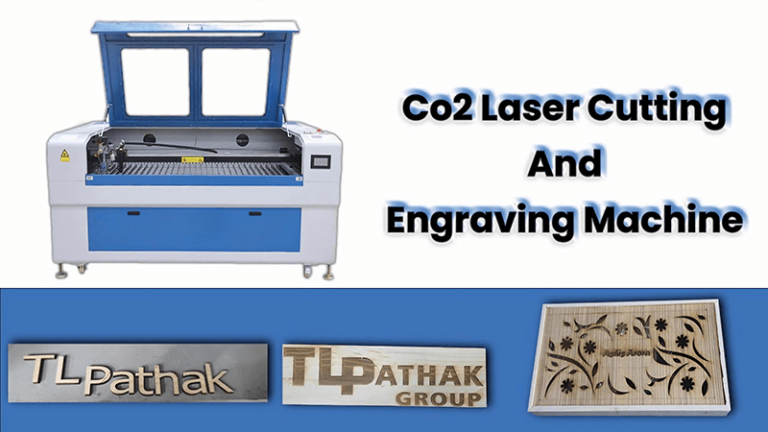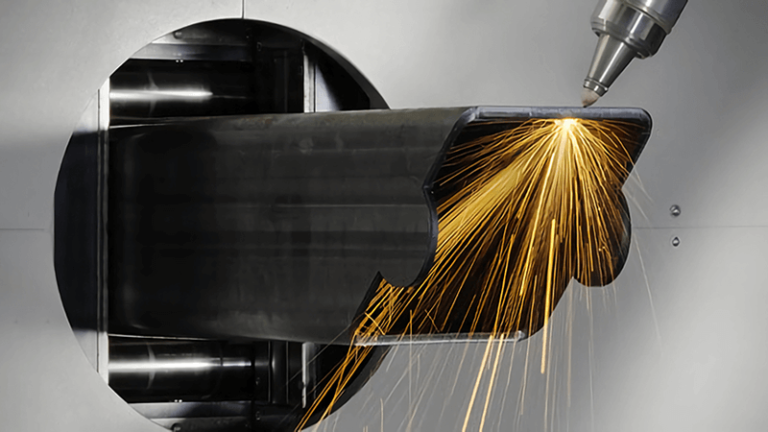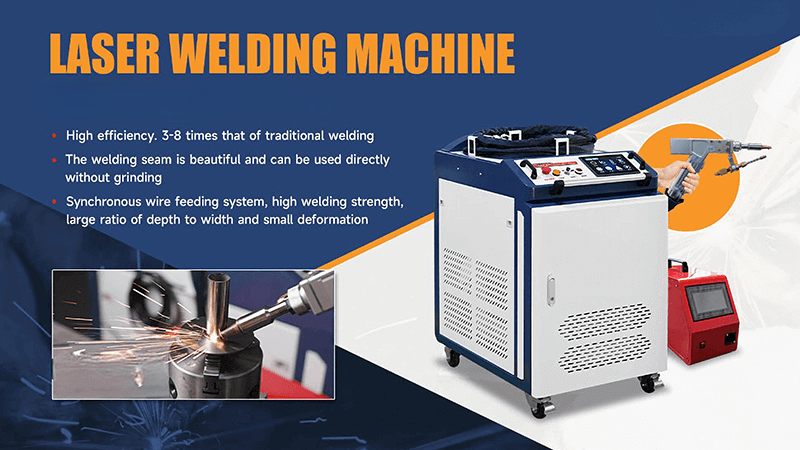
Selecting the right fiber welder for your business can feel like navigating a maze. With so many options available, how do you know which one is best for your specific needs? Are you stuck between power levels, welding speed, or material compatibility? The good news is, you don't have to get lost in the process! Choosing the best fiber welder can be straightforward if you know what to look for.
By carefully evaluating these factors—application needs, laser power and speed, precision requirements, cooling systems, user-friendliness, portability, brand reputation, and budget—you can select a fiber welder that best suits your specific applications. This thoughtful approach will help ensure that you invest in a machine that enhances your productivity and meets your welding quality standards effectively.
We’re here to simplify the decision-making process. Let's dive into how you can choose the perfect fiber welder to match your applications.
What is a Fiber Welder and How Does It Work?
A fiber laser welder uses high-powered laser beams to melt and fuse metals or plastics. The laser is typically generated by a fiber optic cable, which is why it’s called a fiber welder. These machines offer high precision, faster speeds, and more energy efficiency than traditional welding methods.
Fiber laser welding involves the use of a laser beam generated through optical fibers, which are typically doped with rare earth elements like ytterbium. The process converts electrical energy into light energy, which is then transmitted through the fiber optic cables to create a highly concentrated and intense laser beam. This beam is directed at the metal workpieces, where it generates enough heat to melt the material and form a strong weld upon cooling.
| Type | Power (kW) | Material Thickness (mm) | Typical Applications |
|---|---|---|---|
| Water-Cooled Continuous Fiber Lasers | |||
| 1.5 kW | Up to 4 mm | Welding thin sheets of stainless steel and aluminum in automotive and manufacturing industries. | |
| 2 kW | Up to 6 mm | Industrial applications, including structural components and heavier gauge materials. | |
| 3 kW | Up to 10 mm or more | Heavy-duty applications such as shipbuilding, aerospace, and large structural components. | |
| Air-Cooled Fiber Lasers | |||
| 0.8 kW | Up to 2 mm | Small-scale operations, hobbyist applications, or delicate parts in electronics. | |
| 1.2 kW | Up to 3 mm | Light industrial applications for small machinery parts. | |
| 1.5 kW | Up to 4 mm | Automotive industry for joining components and general manufacturing. | |
| 2 kW | Up to 6 mm | Thicker metal parts in construction and heavy machinery manufacturing. |
So, why is fiber welding becoming so popular? Unlike older welding technologies, fiber welders provide a clean and focused beam, minimizing heat distortion. This makes them ideal for delicate work.
Fiber laser welding provides high precision and speed, making it ideal for delicate work.True
No explanation available.
Fiber laser welders are known for their high energy consumption and frequent need for maintenance.False
No explanation available.
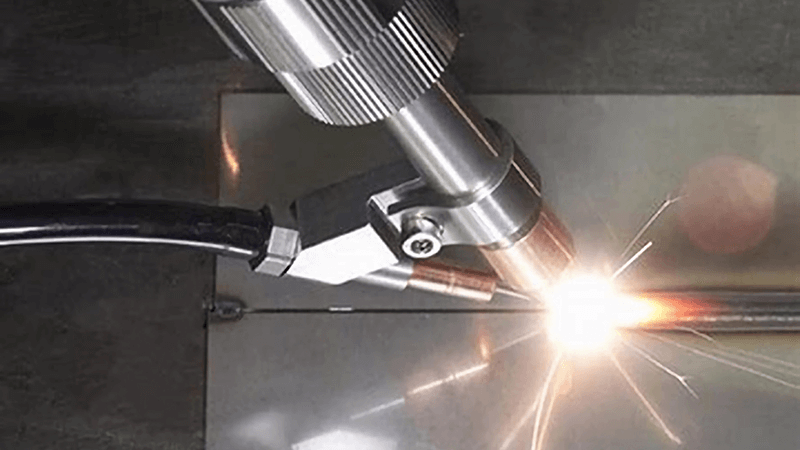
Fiber laser welding is rapidly gaining popularity across various industries due to its exceptional benefits and versatile applications. Here's why more businesses are turning to this advanced welding technology:
-
Precision and Strength Across Industries
Automotive Industry: Fiber laser welding enables the joining of dissimilar metals, such as aluminum and steel, which is crucial for manufacturing lightweight and fuel-efficient vehicles. The precision of fiber lasers ensures strong, durable welds in components like chassis and body panels, improving vehicle performance.
Aerospace Sector: For aerospace applications, fiber laser welding creates strong joints in critical components like turbine blades and fuselage parts. The precision minimizes distortion, essential for parts that need to withstand extreme conditions, while also allowing weight reduction by reducing the number of rivets used.
Medical Device Manufacturing: The ability to weld small, intricate parts with minimal heat input is invaluable in the medical field, where implants and surgical instruments require high hygiene standards. Portable fiber laser systems also allow for on-site repairs, offering flexibility and convenience. -
Speed and Efficiency
High-Speed Production: The fast welding speeds of fiber laser systems help manufacturers reduce production times without sacrificing quality. This is especially beneficial in industries with tight deadlines, such as automotive and electronics.
Automation Integration: Fiber laser welding systems are highly compatible with robotic automation, enhancing production efficiency. Automation ensures consistent quality and fast processing, particularly in high-volume manufacturing environments like electronics. -
Cost-Effectiveness and Low Maintenance
Fiber laser welding systems typically have fewer consumables than traditional welding methods, reducing operational costs over time. Their low maintenance needs further contribute to cost savings, making them an attractive investment for businesses seeking long-term benefits. -
Versatility and Flexibility
Fiber laser welding offers remarkable flexibility, adapting to various materials and product designs with minimal reconfiguration. This is especially valuable for companies with diverse product lines or those that frequently update their designs. Whether working with metals, plastics, or delicate components, fiber laser welding systems can handle a wide range of applications with ease. -
Enhanced Quality Control
The precision of fiber laser welding results in fewer defects, leading to higher-quality welds. Businesses benefit from reduced rework and increased customer satisfaction, as the technology ensures clean, strong, and reliable joints with minimal post-weld finishing.
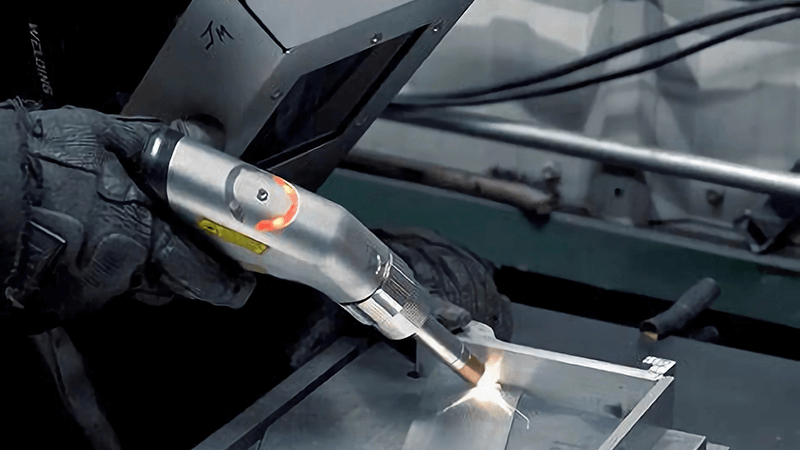
Key Factors to Consider When Choosing a Fiber Welder
When you’re picking a fiber welder, there are a few crucial factors to think about. First off, let’s talk about material compatibility.
1. Material Type
Fiber lasers work wonders with metals like stainless steel, aluminum, and copper. But different materials require different wavelengths or power levels. Make sure the machine you choose matches the materials you'll be working with.
2. Power Requirements
Power isn’t just about welding thicker metals—it also affects speed. Too much power can burn through thin materials, while too little might leave seams weak. You’ll want a welder that gives you just the right power for your tasks.
3. Precision and Speed
Are you working on small, detailed items or large industrial pieces? The precision you need will influence the type of machine you choose. Speed is also important for large production runs, but it shouldn’t come at the expense of quality.
4. Machine Size and Portability
Will you be working in a fixed location or need to move the machine around? Some fiber welders are compact and portable, while others are larger and more stationary. Assess your workspace before committing.
Fiber Welder Features You Shouldn't Overlook
There are certain features in fiber welders that can make a huge difference in terms of performance and user experience.
1. Cooling System
Fiber lasers generate a lot of heat. A good cooling system ensures your machine doesn’t overheat during long hours of operation. Without it, you might face downtime, higher maintenance costs, or reduced performance.
2. Automation and Controls
The more automated your fiber welder is, the easier it is to use. Look for machines with intuitive controls that simplify setup, especially if you’re new to laser welding.
3. Maintenance Needs
Nobody wants a machine that’s hard to maintain. Choose a welder that requires minimal upkeep and offers accessible service when needed.
Fiber welders are designed to last, but regular maintenance ensures your machine works like new for years to come.
In addition to water-cooled welding machines, there is a new technology that doesn’t require a water cooling system. It’s called the air-cooled laser welding machine.
With the continuous development of laser welding technology, air-cooled laser machines have emerged as an important innovation in the industry. Unlike traditional water-cooling systems, air-cooled lasers use efficient air cooling technology to maintain the laser temperature during the welding process, eliminating the need for external water pumps and pipes. The main advantage is the simplified cooling system, which makes the equipment more compact, easier to operate and maintain, and reduces overall usage costs.
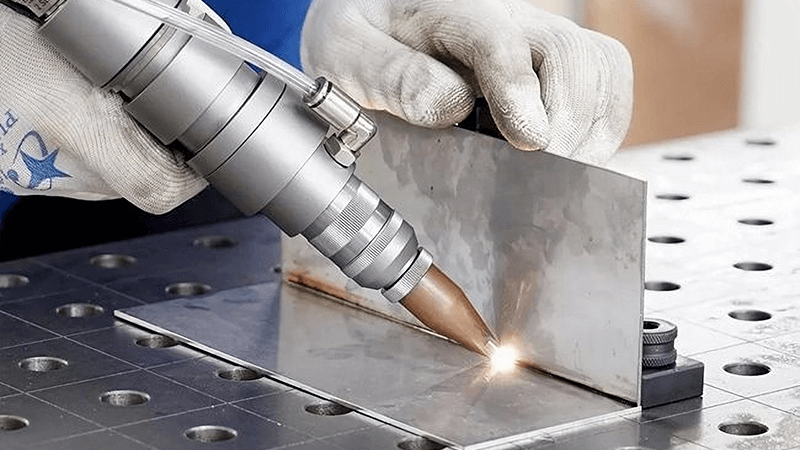
Advantages of Air-Cooled Laser Welders:
-- No Need for Water Cooling System: Uses air cooling instead of external water pumps and pipes, avoiding issues like water leakage and contamination.
-- Compact Design: The air-cooled laser welder is smaller in size, making it easy to integrate into different production lines and workstations, saving space and improving flexibility.
-- Low Maintenance Cost: No need to regularly replace coolant or clean water systems, reducing maintenance workload and costs.
-- Environmentally Friendly and Energy Efficient: Uses less energy than traditional water cooling systems and doesn't consume large amounts of water, making it more environmentally friendly.
High Stability: The air cooling system uses an efficient heat dissipation mechanism to maintain temperature control, ensuring stable performance during prolonged operation.
Applications of Air-Cooled Laser Welders:
Air-cooled laser welding machines are widely used in industries like automotive manufacturing, electronics assembly, and metal processing. Their efficient, stable welding performance and low maintenance costs make them an ideal choice for many small to medium-sized enterprises and production lines.
Suitable Industries:
-- Electronics Manufacturing: For welding precision parts such as mobile phones and computer accessories.
-- Automotive Manufacturing: Used in welding automotive components, especially for precision welding of car bodies and interior parts.
-- Metal Processing: Suitable for welding metals such as stainless steel, aluminum alloys, and copper.
Kirin Laser’s Air-Cooled Laser Welding Machines:
Kirin Laser’s air-cooled welding machines utilize advanced air-cooling technology combined with a high-performance laser source to provide high-quality welding results. The stability and ease of maintenance make it a popular choice in the market. With an innovative design, Kirin Laser’s air-cooled welding machines offer customers a cost-effective solution, bringing greater flexibility and efficiency to production lines.
Click to learn more about our air-cooled laser welding machines and take your production to the next level!
Comparison: Air-Cooled vs. Water-Cooled Laser Welding Machines
| Feature | Air-Cooled Laser Welding Machine | Water-Cooled Laser Welding Machine |
|---|---|---|
| Cooling Method | Air cooling (uses ambient air for cooling) | Water cooling (requires external water pump and pipes) |
| Size and Space | Compact, space-saving design | Larger, requires more space for cooling components |
| Maintenance Requirements | Low maintenance, no need for water changes | High maintenance, requires regular water changes and cleaning |
| Cost | Lower overall cost due to simpler system | Higher overall cost due to complex cooling system |
| Energy Consumption | Lower energy consumption | Higher energy consumption due to water circulation system |
| Environmental Impact | More environmentally friendly (no water consumption) | Requires water, potentially wasting resources |
| Performance Stability | Stable performance, suitable for smaller production runs | Highly stable, suitable for large-scale industrial use |
| Suitable Applications | Ideal for small to medium-sized businesses, precision welding | Suitable for large-scale, high-volume industrial applications |
Air-cooled laser welders eliminate the need for water pumps and pipes, simplifying maintenance.True
No explanation available.
Fiber laser welders can only be used for welding metals and cannot work with plastics.False
Fiber laser welders are versatile and can weld both metals and plastics, making them suitable for a wide range of materials and applications.
The Importance of Quality and Reliability
When it comes to fiber welding, quality is key. You want a welder that offers consistent, reliable performance day in and day out.
Here’s the thing—quality welders may cost more upfront, but they’ll pay off in the long run. Low-cost machines might seem tempting, but they could lead to unreliable results and expensive repairs. Look for trusted brands that offer solid warranties and after-sales support.
How to Choose the Best Brand and Model
Choosing the right brand matters. Big-name brands like Kirin Laser offer reliability, while smaller brands might cut corners. Check customer reviews to get a sense of how a brand performs in the real world. Don’t just go with the cheapest option—make sure the manufacturer offers top-tier customer service.
Another thing to keep in mind is the model. Not all fiber welders are made equal. Some offer advanced features, while others are simple and straightforward. Match the machine’s capabilities to your needs, not the price tag.
Understanding Fiber Welder Costs and ROI
Cost is always a concern when purchasing new equipment. But before you make a decision, it’s important to think about the return on investment (ROI). Will the machine pay for itself over time through increased production or better results? Higher-quality welders might have a higher initial cost, but they offer faster, more reliable performance—saving you money in the long run.
Weigh the upfront cost against the potential long-term benefits. A low-cost machine might save you money now but could end up costing more in repairs and inefficiencies later on.

Fiber Welding Applications and Industries
Fiber welders are used in various industries, including automotive, aerospace, and electronics. From small precision welding tasks to larger industrial applications, fiber welders can tackle it all.
For instance, in the automotive industry, these machines are used for welding metal parts, ensuring both strength and accuracy. Meanwhile, in electronics, they’re used to weld thin components without damaging delicate circuits.
Conclusion
In the end, choosing the best fiber welder for your application requires understanding your specific needs—whether that’s material type, speed, or precision. Take your time, do your research, and don’t rush into a decision. With the right welder, you’ll ensure quality results and boost your efficiency.
Still have questions? Contact us today to find the perfect fiber welder for your business. Let’s take your welding projects to the next level!
References:
- "Factors Influencing Fiber Laser Welding Machine Prices", from Kirin Laser.
- " Top 10 Best-Selling Air-Cooled Laser Welding Machines" from Kirin Laser
- "Exploring The Cost Of Laser Welding Machines: Factors Affecting Price", from TBK.


